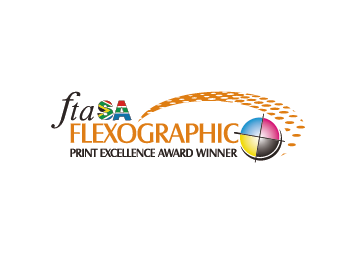Flexographic Printing Explained
Flexographic Printing Process:
Flexography is a form of rotary printing that transfers ink from flexible plates mounted on rotating cylinders to substrates. The process is known for its fast printing speeds, ability to print on non-flat surfaces, and the use of fast-drying inks.
Ink Transfer:
In flexography, ink is applied to a plate with raised images and text. The plate is attached to a cylinder, making contact with the substrate as it passes through the press.
Inks and Colors: The type of ink used (water-based or UV-based) affects the drying time and durability. The color choice impacts the vibrancy and appeal of the final product.
Plate Making:
The printing plate is created from a digital image. This plate carries the image to be printed and is crucial for detail and clarity.
Artwork Design: The complexity of the design and number of print colors dictate the plate-making process, affecting resolution and print quality.
Printing Process:
The substrate is fed through the press, where each color is applied by a separate print station. The final number of colors or finishes determines the number of passes and stations used – our presses have from six to eight print stations.
Substrate and Adhesive Types: Different substrates and adhesives are chosen based on the application surface type and conditions, impacting adhesion, appearance, and performance.
Drying and Curing:
After the ink is applied, it must dry or cure. UV inks cure instantly under UV light, while water-based inks may require additional drying time.
Application Conditions: Environmental factors, like humidity and temperature, can affect ink drying and adhesion, influencing the choice of inks and drying methods.
Cutting and Finishing:
Once printed, the labels are cut into their final shape and size, often using a die. Special effects like foiling, reverse prints or laminates are applied in subsequent stages.
Die Shapes and Special Effects: The chosen size and shape, as well as any additional finishes like varnishes or holographic effects, add to the label’s functionality and aesthetic appeal.
Variables Impacting Flexographic Printing:
Label Size (Dimension):
Determines the plate size and the press setup, impacting cost and waste.
Quantity Required:
Influences the production run length and potential economies of scale.
Number of Variants:
Affects the number of plate changes and setup time, influencing turnaround time.
Substrate Type:
Dictates the ink types and press settings, affecting print quality and durability.
Adhesive Required:
Influences label performance, particularly its ability to stick to the application surface.
Application Surface Type:
Determines the compatibility of the label with the intended surface.
Application Conditions:
Environmental factors can affect label application and performance.
Number of Print Colors or Design:
Impacts the number of plates and print stations needed, as well as the complexity and cost of the print job.








Trusted for over 40 years
across various sectors in South Africa.
Navigation
Working hours
- Mon - Fri
- -
- Sat - Sun
- Closed

Slide title
Write your caption hereButton
Slide title
Write your caption hereButton
Slide title
Write your caption hereButton
Slide title
Write your caption hereButton
Slide title
Write your caption hereButton
